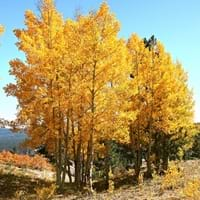Life Span
Perennial
Perennial
Type
Flowering Plants, Fruits, Trees
Tree
Origin
Central America, Europe, North America
North America
Types
Not Available
Not Available
Habitat
Hedge, Scrubs, Woods
Forest margins, gardens, Roadsides, Woodlands
USDA Hardiness Zone
4-8
1-8
AHS Heat Zone
Not Available
8-1
Sunset Zone
Not Available
A1, A2, A3, 1a, 1b, 2a, 2b, 3a, 3b, 4, 5, 6, 7, 14, 15, 16, 17, 18, 19
Habit
Not Available
Upright/Erect
Flower Color
White
Not Available
Flower Color Modifier
Not Available
Bicolor
Leaf Color in Spring
Dark Green
Blue Green, Dark Green
Leaf Color in Summer
Green
Blue Green, Dark Green
Leaf Color in Fall
Brown, Green, Light Yellow
Yellow, Blue Green
Leaf Color in Winter
Not Available
Not Available
Leaf Shape
Oblong
Heart-shaped
Plant Season
Summer
Spring, Summer, Fall
Sunlight
Full Sun, Partial shade
Full Sun
Type of Soil
Loamy
Clay, Loam, Sand
The pH of Soil
Neutral
Acidic, Neutral
Soil Drainage
Well drained
Average
Bloom Time
Fall, Summer
Spring
Where to Plant?
Ground
Ground
How to Plant?
Grafting, Seedlings, Transplanting
From Rhizomes
Plant Maintenance
Medium
Medium
Watering Requirements
Medium
Prefer drip-irrigation instead of Over-head watering, Water more in summer
In Summer
Lots of watering
Lots of watering
In Spring
Moderate
Moderate
In Winter
Average Water
Average Water
Soil pH
Neutral
Acidic, Neutral
Soil Type
Loamy
Clay, Loam, Sand
Soil Drainage Capacity
Well drained
Average
Sun Exposure
Full Sun, Partial shade
Full Sun
Pruning
Prune when plant is dormant, Remove dead or diseased plant parts
Prune to control growth, Remove deadheads, Shape and thin as needed
Fertilizers
All-Purpose Liquid Fertilizer
20-20-20 amount, All-Purpose Liquid Fertilizer, Apply 10-10-10 amount
Pests and Diseases
Aphids, Curculio occidentis, Japanese Beetles, Leaf Rollers, Leafminer, Mites, Red blotch, sawflies, Scale, Stink bugs
Insects
Plant Tolerance
Drought
Drought
Flowers
Yes
Insignificant
Flower Petal Number
Single
Not Available
Foliage Texture
Medium
Medium
Foliage Sheen
Matte
Glossy
Attracts
Not Available
Not Available
Allergy
Digestive Problems, Respiratory problems
no allergic reactions
Aesthetic Uses
Showy Purposes
Showy Purposes
Beauty Benefits
Beautiful Skin
Not Available
Environmental Uses
Food for birds
Air purification
Medicinal Uses
Anthelmintic, Antibacterial, Astringent, Hypnotic, Laxative, Refrigerant
No Medicinal Use
Part of Plant Used
Fruits
Bark, Pulp
Other Uses
Edible syrup, Jam, Jelly, Used As Food
Used in paper industry, Wood is used for making furniture, Wood is used in construction
Used As Indoor Plant
No
No
Used As Outdoor Plant
Yes
Yes
Garden Design
Not Available
Shade Trees
Botanical Name
Malus sylvestris
POPULUS tremuloides
Common Name
European crab apple
Quaking Aspen
In Hindi
european crab apple
Quaking Aspen
In German
Der Holzapfel, Europäischer Wildapfel
Zitterpappel
In French
Le Boquettier, le Pommier sauvage ou Pommier des bois
tremble
In Spanish
Malus sylvestris, el Manzano silvestre, manzano silvestre europeo
Temblor Aspen
In Greek
Ευρωπαϊκή μήλο καβουριών
τρεμώδεις Aspen
In Portuguese
Malus sylvestris
Quaking Aspen
In Polish
Jabłoń dzika
Quaking Aspen
In Latin
european crab apple
Tremens Quisque
Phylum
Magnoliophyta
Tracheophyta
Class
Magnoliopsida
Magnoliopsida
Order
Rosales
Malpighiales
Family
Rosaceae
Salicaceae
Clade
Angiosperms, Eudicots, Rosids
Angiosperms, Eudicots, Rosids
Tribe
Not Available
Saliceae
Subfamily
Not Available
Not Available
Number of Species
Not Available
Properties of European Crab Apple and Quaking Aspen
Wondering what are the properties of European Crab Apple and Quaking Aspen? We provide you with everything About European Crab Apple and Quaking Aspen. European Crab Apple has thorns and Quaking Aspen doesn't have thorns. Also European Crab Apple does not have fragrant flowers. European Crab Apple has allergic reactions like Digestive Problems and Respiratory problems and Quaking Aspen has allergic reactions like Digestive Problems and Respiratory problems. Compare all the properties and characteristics of these two plants. Find out which of these plant can be used as indoor plant. If you are interested to decorate your house and garden, find out aesthetic uses, compare them and select the plant which will beautify your surrounding. Along with beautification, try comparing medicinal and edible uses of European Crab Apple and Quaking Aspen and you can choose the plant having best and most benefits.
Season and Care of European Crab Apple and Quaking Aspen
Season and care of European Crab Apple and Quaking Aspen is important to know. While considering everything about European Crab Apple and Quaking Aspen Care, growing season is an essential factor. European Crab Apple season is Summer and Quaking Aspen season is Summer. The type of soil for European Crab Apple is Loamy and for Quaking Aspen is Clay, Loam, Sand while the PH of soil for European Crab Apple is Neutral and for Quaking Aspen is Acidic, Neutral.
European Crab Apple and Quaking Aspen Physical Information
European Crab Apple and Quaking Aspen physical information is very important for comparison. European Crab Apple height is 25.00 cm and width 20.00 cm whereas Quaking Aspen height is 1,220.00 cm and width 610.00 cm. The color specification of European Crab Apple and Quaking Aspen are as follows:
European Crab Apple flower color: White
European Crab Apple leaf color: Dark Green
Quaking Aspen flower color: Not Available
- Quaking Aspen leaf color: Blue Green and Dark Green
Care of European Crab Apple and Quaking Aspen
Care of European Crab Apple and Quaking Aspen include pruning, fertilizers, watering etc. European Crab Apple pruning is done Prune when plant is dormant and Remove dead or diseased plant parts and Quaking Aspen pruning is done Prune to control growth, Remove deadheads and Shape and thin as needed. In summer European Crab Apple needs Lots of watering and in winter, it needs Average Water. Whereas, in summer Quaking Aspen needs Lots of watering and in winter, it needs Average Water.





